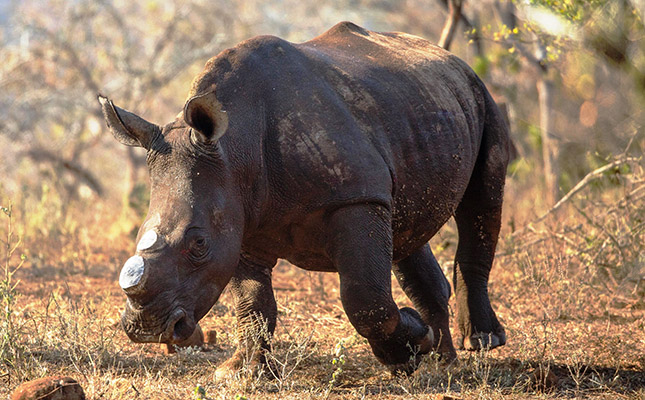
Photo: Chris Galliers/Project Rhino KZN
While the 25% decline in rhino poaching incidences in South Africa between 2017 and 2018 should be cause for celebration, some are calling into question the accuracy of these latest figures.
The Minister of Environmental Affairs, Nomvula Mokonyane, recently issued a statement announcing that the 769 rhino poaching incidents recorded for the 2018 calendar year had decreased significantly from the 1 028 incidents recorded during the previous year.
She stated that this was “the third consecutive year that South Africa has seen a decline in rhino poaching, particularly in national parks” and that it was “also the first time in five years that the annual figure is under 1 000”.
Mokonyane also said that during 2018, a total of 365 alleged rhino poachers and 36 alleged rhino horn traffickers were arrested nationwide.
A total of 229 alleged poachers were arrested inside or adjacent to the Kruger National Park, which were 40 more than the 189 arrested in or near the park in 2017.
“There are currently 318 rhino poaching-related cases on the court roll involving 645 accused and 897 charges. From January to December 2018, the National Prosecuting Authority [secured] convictions in 78 of the 82 cases that went to trial. This represents a 95,1% conviction rate,” she added.
Responding to Mokonyane’s statement, Elise Serfontein, founding director of StopRhinoPoaching.com, said that while the Department of Environmental Affairs’s (DEA) statistics were a realistic reflection of rhinos killed by poachers in 2018, “we have heard from reliable sources that this figure no longer includes rhinos that were wounded by poachers, which means that the official number is, in fact, higher”.
“Whether a rhino is killed by poachers or wounded by poachers, it is still a crime and should therefore be recorded as such,” she said.
Serfontein’s concern was supported by an anti-rhino poaching official, who spoke to Farmer’s Weekly on condition of anonymity.
“You need to be circumspect about these statistics. I’ve personally experienced a case where a rhino was wounded by poachers, it was then taken in by authorities for treatment, but it subsequently died of its wounds. The police refused to record it as a poaching case because the rhino died while in the hands of conservation officials. Then there are the many rhinos that are wounded by poachers and then die in the bush; their carcasses are never found.”
Kim Da Ribeira, director of Outraged South African Citizens Against Poaching, also expressed doubt about the accuracy and transparency of the DEA’s statistics and questioned why Mokonyane did not include rhino population figures for the Kruger National Park during 2018.
“Our understanding is that the population of white rhinos in the Kruger National Park is currently below 3 000 animals. The DEA is making decisions based on information that is fundamentally flawed in that it is incomplete,” Da Ribeira said.











